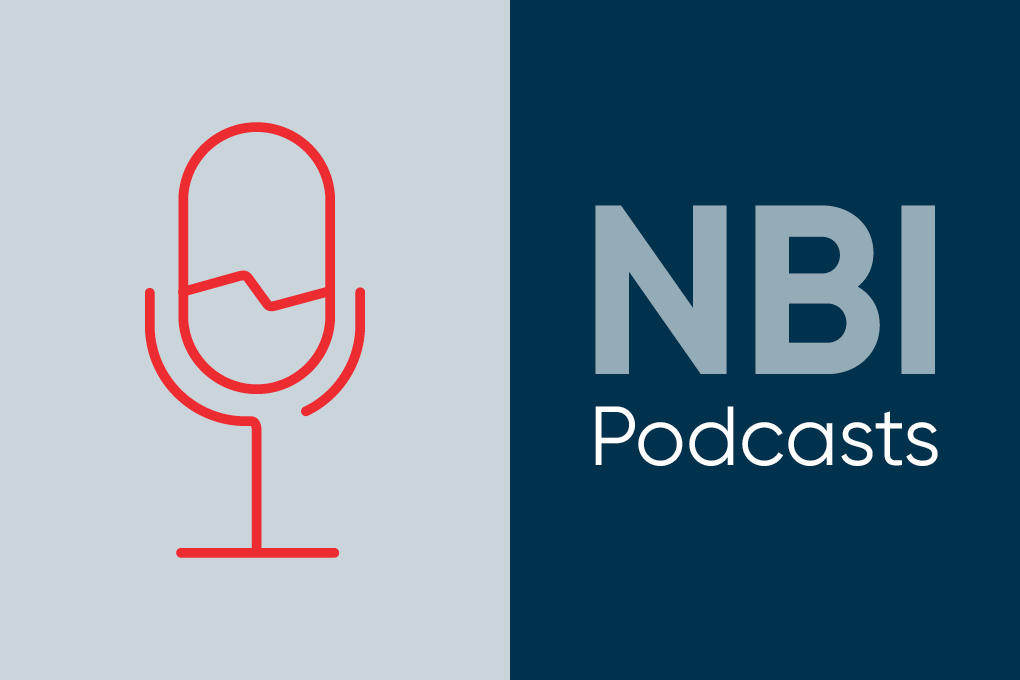Annamaria Testani (AT) and Martin Lefebvre (ML)
AT:
Good day everyone, thank you for tuning into NBI Quick Takes. My name is Annamaria Testani, Vice-President, National Sales for National Bank Investments. Today I’m with Martin Lefebvre, who is our Chief Investment Officer and Strategist who’s here to talk to us about the messages related to stocks and bonds.
Moving along, one of the first questions I’d like to ask you is: How can we reconciliate the greatest economic shock since the Great Depression that’s happened within the stock market that is roughly flat year-over-year?
ML:
Annamaria, that is a great question. We could be spending a lot of time on this topic alone.
At first sight, there indeed seems to be a disconnect between, on the one side, you’ve got the bond yields, which are basically saying that things are really, really bad. I mean, you just have to look at unemployment rates across the globe to understand that: you take the U.S. alone, about 20 million jobs were lost over the last two months. And on the other side, you’ve got the stock market which is basically saying things are all right. We’ve seen a spectacular surge in prices since March’s low. But you know what? It turns out that both sides may be right.
Generally speaking, we know that interest rates and commodity prices are linked more towards the economy, something that is sometimes referred to as Main Street. As such, because of the forced lockdowns that we’re in, and the impact on economic growth, it’s no surprise to see that bond yields right now are hovering around historical lows while energy prices are down markedly since the beginning of the year.
AT:
It makes a lot of sense, what you just said. But aren’t stocks also linked to the economy?
ML:
Absolutely, you’re right. And that’s done via the impact on corporate earnings, and that is exactly what people on Wall Street and Bay Street in Toronto are preoccupied with right now. But you also have to remember that the stock market is all about expectations. So, if we go back a little, and you will certainly recall this, the period of uncertainty we’re in also started with a spectacular correction of major equity markets around the world. Just to give you an example, the S&P 500 lost nearly 35% of its value in about just a few weeks, before rebounding just as forcefully following two events, the first one being unprecedented fiscal and monetary measures across the globe, and then secondly, in the hope that containment measures were working and would lead to an early reopening of economies. But, to me, that’s not the whole story: don’t forget that equity indices are aggregates. There are always winners and losers in all of this. Stocks that were negatively affected by the pandemic (you can think of airlines, cruise ships, and hotels, everything related to tourism) have managed to rebound somewhat since the bottom, but they remain badly hit. Meanwhile, tech-heavy-related stocks, you can think about social media, communication or even online shopping are really thriving in this confinement period that we’re in. Other than that, you can also think of defensive sectors: so even though the stock market has rebounded, what we’re seeing right now is that the leadership is being assumed by the defensive sector. And at the forefront of all of that, you’ve got the health care stocks… I don’t need to explain why those are doing well right now!
So, you can see that stocks are not completely ignoring what’s going on. And while a lot of that has already been done, I think, to prevent the worst, there is still a lot of uncertainty, and that’s why stocks have probably just recouped half of their peak-to-trough losses.
AT:
What I find interesting is that we keep alluding to this expression of uncertainty. And I think uncertainty has a different connotation depending on whom the listener is. What comes to mind to you when you’re using that word, uncertainty, in your analysis that you just provided us?
ML:
Well, for one thing, surely, when we look at data, it will worsen. It’s likely to worsen. We already know GDP growth was down something like 4% in the first quarter, but the eye of the storm was more during the springtime, and more specifically April and part of May. So, we’re in it. And the second quarter is going to be really, really bad.
Because of that, markets are expecting more to be done on the fiscal side but while administrations were quick to open the taps, they might be more reluctant to do it again in the face of already what you can already dub astronomical deficits so far. So that’s the first risk.
There’s also the risk of a second phase of COVID-19 if economies do reopen, and they do it too quickly. That seems to have happened in past pandemics and was certainly the case during the Spanish flu about a 100 years ago. Right now, markets are not too preoccupied by that because there is also a risk, and that’s a positive one, that some drug will help soothe the illness or, even better, that a vaccine will see the day sooner than usual. But that’s probably something further down the road, but markets are really hoping that that will happen and may offset some of the risk linked to a reopening of the economies.
AT:
It makes sense. When we got hit with COVID, it was that unknown factor. Any future developments that will come from this, to your point, the unknown is known. Now it’s just the unknown of how we’re going to react or how to deal with that uncertainty. So it makes perfect sense.
Martin, you mentioned something interesting. You said, “unprecedented fiscal and monetary measures across the board”. If we start with the former, can you give us an order of magnitude of what it represents?
ML:
Annamaria, it’s really huge. Whether you talk about Canada, the USA or Europe, it’s all pretty much in the neighbourhood of about 10% of GDP. This represents the biggest rates since the Second World War. However, as you well know, economies are much bigger today than they were in the 1940s, so, when you look at things in nominal terms, in absolute terms, the deficits today are the biggest ever recorded. If you take the USA for example, at around 12% of GDP, it amounts to more than $3 trillion USD and, as mentioned earlier, more may be required soon.
AT:
So in other words, very small amounts of money that we’re discussing! When you look at this, I think your word was astronomical. Who’s going to pay for all of this?
ML:
Oh! that’s a tough one, and I’m not sure we have time to get into the details, but let’s just say that … a few points. The first one is, something had to be done. There’s no sense in thinking about the water damages if you first don’t put out the fire, right. Because we tend to look at deficits or debt in percentage of GDP, doing nothing meant that the denominator of your ratio (the GDP) would have shrunk even more, the ratio was set to get much worse anyways, and if you don’t do anything, then you would run the risk of entering a depression phase that would take much longer to get out of. So something had to be done.
The second thing is that pretty much every country in the world is in a similar position. If it was only the US doing it, and the rest of the world is fine, then relatively speaking, the US would get in worse shape. But everyone is doing it. So this should limit the relative impact on interest rates and foreign exchange rates.
The third thing is that with yields at 0%, I think that never in the history of mankind has there been a better time to do it. If you need to go in the red, at 0% is probably your best chance of doing it.
And finally, to answer your question, the probability is that nobody will ever repay that debt. For as long as central banks are doing QE, governments will issue new bonds to pay for the old ones, and keep the wheel turning, a little bit like we’ve been seeing over the last couple of years in Japan, for example. If we eventually get back on our feet, some government somewhere will be tempted by fiscal rectitude and will maybe start talking about raising taxes, but that will take a lot of courage and I don’t think we’re there yet. There’s also a possible risk that inflation will rise and that would also be problematic, but frankly that’s a whole other topic and we’ll have plenty of time to talk about later.
AT:
Martin, you’ve given us a lot of perspective. There are a lot of unknowns that still need to be ironed out. I think you’ve brought a lot of attention to the fact that certain measures have been put in place, rightly or wrongly, is to basically stem the worst-case scenarios. NBI Quick Takes are basically to be sure that can we give you this quick, concise information on some of these topics that are relevant them. Martin, I want to thank you for taking the time for helping us because you’ve definitely been educational for me and we hope to have you again in the near future.


 Martin Lefebvre
Martin Lefebvre

